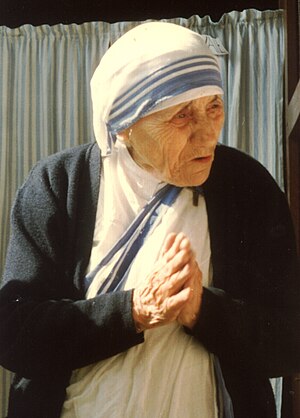skip to main |
skip to sidebar
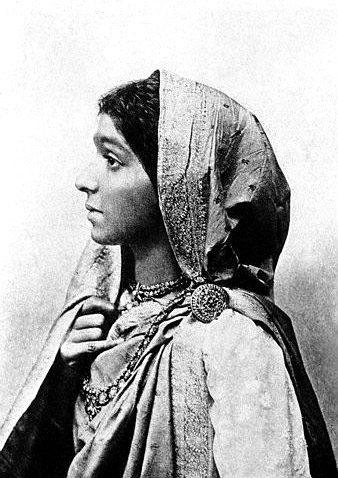 Sarojini Naidu was born February 13, 1879 in Hyderabad. Her father, Aghorenath Chattopadhyaya, was a celebrated scientist, poet and social reformer whose brilliance foreshadowed that of his daughter's. Dr. Chattopadhyaya was a gifted student, earning a scholarship to study at the University of Edinburgh where he earned his Doctorat in Science (the first Indian to do so) before continuing his education in Bonn, Germany, where he continued to earn praise.1 Upon his return, he founded the Nizam College at Hyderabad devoting his life's work to education, very much following in the footsteps of his Brahmin ancestors who were traditionally known for their patronage of Sanskrit learning.2 Sarojini's mother, Varada Sundari, accomplished in her own right, was a noted Bengali singer and lyricist and a devoted mother to her eight children. It is therefore with the enthusiastic support of an educated parentage and during a time when Hyderabad was a flourishing center of education that Sarojini's creative lineage began.
Sarojini Naidu was born February 13, 1879 in Hyderabad. Her father, Aghorenath Chattopadhyaya, was a celebrated scientist, poet and social reformer whose brilliance foreshadowed that of his daughter's. Dr. Chattopadhyaya was a gifted student, earning a scholarship to study at the University of Edinburgh where he earned his Doctorat in Science (the first Indian to do so) before continuing his education in Bonn, Germany, where he continued to earn praise.1 Upon his return, he founded the Nizam College at Hyderabad devoting his life's work to education, very much following in the footsteps of his Brahmin ancestors who were traditionally known for their patronage of Sanskrit learning.2 Sarojini's mother, Varada Sundari, accomplished in her own right, was a noted Bengali singer and lyricist and a devoted mother to her eight children. It is therefore with the enthusiastic support of an educated parentage and during a time when Hyderabad was a flourishing center of education that Sarojini's creative lineage began.


Sarojini Naidu was moved by the partition of Bengal in 1905 and decided to join the Indian freedom struggle. She met regularly with Gopal Krishna Gokhale, who later introduced her to the stalwarts of the Indian freedom movement. She met Mahatma Gandhi, Pandit Jawaharlal Nehru, C. P. Ramaswami Iyer and Muhammad Ali Jinnah. With such an encouraging environment, Sarojini later moved on to become leader of the Indian National Congress Party. She traveled extensively to the United States of America and many European countries as the flag-bearer of the Indian Nationalist struggle.
During 1915, Sarojini Naidu traveled all over India and delivered speeches on welfare of youth, dignity of labor, women's emancipation and nationalism. In 1916, she took up the cause of the indigo workers of Champaran in the western district of Bihar.
In March 1919, the British government passed the Rowlatt Act by which the possession of seditious documents was deemed illegal. Mahatma Gandhi organized the Non-Cooperation Movement to protest and Naidu was the first to join the movement. Besides, Sarojini Naidu also actively campaigned for the Montagu-Chelmsford Reforms, the Khilafat issue, the Sabarmati Pact, the Satyagraha Pledge and the Civil Disobedience Movement.
In 1919, she went to England as a member of the all-India Home Rule Deputation. In January 1924, she was one of the two delegates of the Indian National Congress Party to attend the East African Indian Congress. In 1925, she was elected as the President of the Indian National Congress Party.
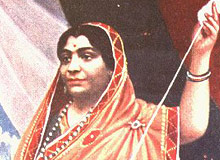 The Nightingale of India, Sarojini Naidu was a prolific writer and poet. The first volume of her poetries The Golden Threshold was published in 1905, after which two more collections The Bird of Time and The Broken Wing arrived in 1912 and 1917 respectively. Meanwhile in 1916, she authored and published a biography of Muhammad Ali Jinnah entitled as The Ambassador of Hindu-Muslim Unity. Other acclaimed poems that came following are The Wizard Mask and A Treasury of Poems. Other selected works written by her include The Magic Tree and The Gift of India. She was given the name Bharat Kokila on account of the beautiful and rhythmic words of her poems that could be sung as well.
The Nightingale of India, Sarojini Naidu was a prolific writer and poet. The first volume of her poetries The Golden Threshold was published in 1905, after which two more collections The Bird of Time and The Broken Wing arrived in 1912 and 1917 respectively. Meanwhile in 1916, she authored and published a biography of Muhammad Ali Jinnah entitled as The Ambassador of Hindu-Muslim Unity. Other acclaimed poems that came following are The Wizard Mask and A Treasury of Poems. Other selected works written by her include The Magic Tree and The Gift of India. She was given the name Bharat Kokila on account of the beautiful and rhythmic words of her poems that could be sung as well.
In her last years, Sarojini actively participated in the freedom movement and was a part of the Round Table summit held in 1931. In 1942, she was arrested along with Mahatma Gandhi for her involvement in the Quit India movement and was jailed for almost 2 years. After her release from the jail, she presided over the Steering Committee at the Asian Relations Conference. With the independence of India in 1947, Sarojini Naidu was made the Governor of the Uttar Pradeshin the wake of her contribution to the movement. She was the first woman to become the governor of a state. She died of a heart attack while working in her office on 2 March 1949.




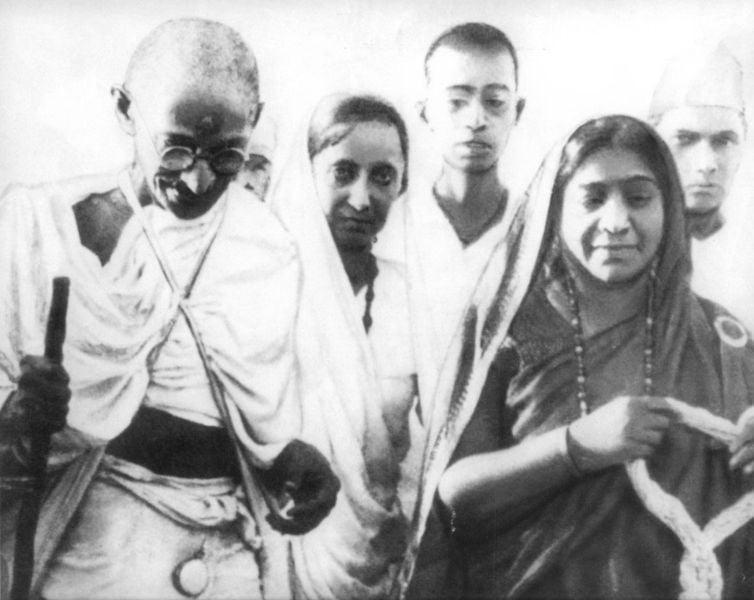
 Many people know Chandrasekhara Venkata Raman (more popularly known as C.V. Raman) because he was the first Indian Nobel Laureate in science. Till date Raman remains the only Indian to receive a Nobel Prize in science. There are two Indian-born scientists viz., Har Gobind Khorana and Subrahmanyan Chandrasekhar (who became US citizens) got Nobel Prizes in science.
Raman was also the first Asian to get Nobel Prize in science. Raman's celebrated discovery, the Raman Effect, experimentally demonstrated that the light-quanta and molecules do exchange energy which manifests itself as a change in the colour of the scattered light. However, this phenomenon was earlier predicted theoretically by Hendrik Anthony Kramers (1894-1952) and Werner Heisenberg (1901-76). It was the most convincing proof of quantum theory of light. This does not diminishes the importantce of Raman's discovery. As Albert Einstein (1879-1955) wrote : "C.V. Raman was the first to recognize and demonstrate that the energy of photon can undergo partial transformation within matter. I still recall vividly the deep impression that this discovery made on all of us."
Many people know Chandrasekhara Venkata Raman (more popularly known as C.V. Raman) because he was the first Indian Nobel Laureate in science. Till date Raman remains the only Indian to receive a Nobel Prize in science. There are two Indian-born scientists viz., Har Gobind Khorana and Subrahmanyan Chandrasekhar (who became US citizens) got Nobel Prizes in science.
Raman was also the first Asian to get Nobel Prize in science. Raman's celebrated discovery, the Raman Effect, experimentally demonstrated that the light-quanta and molecules do exchange energy which manifests itself as a change in the colour of the scattered light. However, this phenomenon was earlier predicted theoretically by Hendrik Anthony Kramers (1894-1952) and Werner Heisenberg (1901-76). It was the most convincing proof of quantum theory of light. This does not diminishes the importantce of Raman's discovery. As Albert Einstein (1879-1955) wrote : "C.V. Raman was the first to recognize and demonstrate that the energy of photon can undergo partial transformation within matter. I still recall vividly the deep impression that this discovery made on all of us."
In 1917, Raman gave up his government job to become the Sir Taraknath Palit Professor of Physics at the Science College of University of Calcutta (1917-33). He made enormous contributions to research in the areas of vibration, sound, musical instruments, ultrasonics, diffraction, photoelectricity, colloidal particles, X-ray diffraction, magnetron, dielectrics, etc. In particular, his work on the scattering of light during this period brought him world-wide recognition.
Raman deserves to be remembered not only for his towering scientific accomplishment but also for his indomitable will. Raman was a staunch patriot and he had great faith in India's potential for progress. He excelled under the most adverse circumstances. Raman was a great populariser of science. "He was perhaps the greatest salesman science has ever had in this country", says S. Ramaseshan, a pioneer of X-ray crystallography in India and a nephew of Raman. During his popular science lectures (or `performances' as Raman called them) Raman held his audience spellbound. His lectures were always accompanied by lively demonstrations. Raman had a deep sense of humour. According to Ramaseshan, the popular science lectures of Raman were so gripping because, "He talked only of those things about which he felt intensely or those things which he understood well or wanted to understand better. He brought out things in their simplest and their most basic elements. He made his audiences feel that they had seen it all too." Raman was a lecturer par excellence. Even his critics had to agree on this point. Throughout his life Raman lectured. He lectured to diverse audiences. However, he was at his best when he delivered popular science lectures. Raman also gave radio talks. The texts of his nineteen radio talks were brought out in a book form. The book was titled The New Physics: Talks on Aspects of Sciences and it was published by the Philosophical Library of New York. The topics covered by Raman ranged from the microscopic world of atoms to the universe itself. The quality of Raman's lectures can be guessed from what Francis Low, a distinguished theoretical physicist then working at the Institute for Advanced Studies, Princeton, wrote in the introduction to this book : "Physics by its very nature requires extreme specialization on the part of its students. Its conclusions, which must eventually predict numbers for the results of actual measurements, are best expressed in mathematical formulae. This has the disadvantage of making the subject well-nigh unintelligible to the layman. There are unfortunately few teachers who are able to surmount this handicap. Professor Raman has written a book which avoids this pitfall and thus should give the lay reader an opportunity of penetrating at least part of the way into the mysteries of this interesting and important science".
In 1917, he was offered the professor of Physics at the Calcutta University, and he decided to accept this opportunity. After 15 years service at the Calcutta University, he left that job and shifted to Bangalore and became the Director of the Indian Institute of Science, where two years later he continued as a professor of physics. In 1947, the new Government of Independent India appointed him as the first National Professor. He also worked in the field of magnetic attraction and theory of musical instruments. He worked out the theory of transverse vibration of bowed strings, because of superposition velocities. This does a better job in explaining bowed string vibration over Helmholtzs approach.
Professor C V Raman was also the first to investigate the harmonic nature of the sound of the Indian drums such as the tabla and the mridanga. In 1930, for the first time in its history, an Indian scholar, educated entirely in India has received highest honour in science, the ‘Nobel Prize’ in physics. In 1943, he founded ‘Raman Research Institute’, near Bangalore. His discovery of the ‘Raman Effect’ made a very distinctive contribution to Physics. He was also conferred the hishest title of ‘Bharat Ratna’ in 1954. The ‘Raman Effect’ was a demonstration of the ‘Collision’ effect of light bullets (Photons) passing through a transparent medium, whether solid, liquid or gaseous. Raman was also awarded the ‘Lenin Peace Prize’ in 1957. India celebrates National Science day on 28th February every year to commemorate Raman’s discovery.
He retired from the Indian Institute in 1948 and after one year, he established the Raman Research Institute in Bangalore, served as its director and remained active there until his death, at the age of eighty-two. Sir Venkata Raman died on Nevember 21, 1970 at Bangalore, India. We should proud on him.


 Tagore was not only a creative genius, he was a great man and friend to many. For instance, he was also a good friend from childhood to the great Indian Physicist, Bose. He was educated and quite knowledgeable of Western culture, especially Western poetry and Science. This made him a remarkable person, one of the first of our planet to combine East and West, and ancient and modern knowledge. Tagore had a good grasp of modern - post-Newtonian - physics, and was well able to hold his own in a debate with Einstein in 1930 on the newly emerging principles of quantum mechanics and chaos. His meetings and tape recorded conversations with his contemporaries such Albert Einstein and H.G. Wells, stand as cultural landmarks, and show the brilliance of this great man. Although Tagore is a superb representative of his country - India - the man who wrote its national anthem - his life and works go far beyond his country. He is truly a man of the whole Earth, a product of the best of both traditional Indian, and modern Western cultures. The School of Wisdom is proud to have him as part of its heritage. He exemplifies the ideals important to us of Goodness, Meaningful Work, and World Culture.
Tagore was not only a creative genius, he was a great man and friend to many. For instance, he was also a good friend from childhood to the great Indian Physicist, Bose. He was educated and quite knowledgeable of Western culture, especially Western poetry and Science. This made him a remarkable person, one of the first of our planet to combine East and West, and ancient and modern knowledge. Tagore had a good grasp of modern - post-Newtonian - physics, and was well able to hold his own in a debate with Einstein in 1930 on the newly emerging principles of quantum mechanics and chaos. His meetings and tape recorded conversations with his contemporaries such Albert Einstein and H.G. Wells, stand as cultural landmarks, and show the brilliance of this great man. Although Tagore is a superb representative of his country - India - the man who wrote its national anthem - his life and works go far beyond his country. He is truly a man of the whole Earth, a product of the best of both traditional Indian, and modern Western cultures. The School of Wisdom is proud to have him as part of its heritage. He exemplifies the ideals important to us of Goodness, Meaningful Work, and World Culture.
Rabindranath Tagore's creative output tells you a lot about this renaissance man. The variety, quality and quantity are unbelievable. As a writer, Tagore primarily worked in Bengali, but after his success with Gitanjali, he translated many of his other works into English. He wrote over one thousand poems; eight volumes of short stories; almost two dozen plays and play-lets; eight novels; and many books and essays on philosophy, religion, education and social topics. Aside from words and drama, his other great love was music, Bengali style. He composed more than two thousand songs, both the music and lyrics. Two of them became the national anthems of India and Bangladesh. In 1929 he even began painting. Many of his paintings can be found in museums today, especially in India, where he is considered the greatest literary figure of India of all times.
 Rabindranath Tagore, mystic, painter and Nobel laureate for literature is among the leading personalities of modern Bangladesh & India.
His father, Debendranath Tagore, was a Sanskrit scholar and a leading member of the Brahmo Samaj. Rabindranath's early education was imparted at home. In school, while others use to learn their lessons, he would slip into more exciting world of dreams. Inspired by his older nephew, he wrote his first poem when he was hardly seven. At the age of seventeen, his first book of poems was published.
Rabindranath Tagore, mystic, painter and Nobel laureate for literature is among the leading personalities of modern Bangladesh & India.
His father, Debendranath Tagore, was a Sanskrit scholar and a leading member of the Brahmo Samaj. Rabindranath's early education was imparted at home. In school, while others use to learn their lessons, he would slip into more exciting world of dreams. Inspired by his older nephew, he wrote his first poem when he was hardly seven. At the age of seventeen, his first book of poems was published.

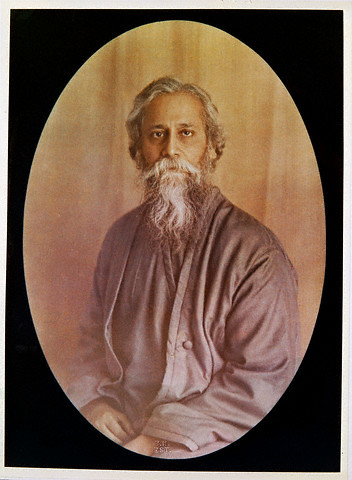
Tagore was awarded the Nobel Prize in 1913 for his book Gitanjali. W.B.Yeats in particular was deeply impressed with this work and wrote an introduction. With this honour Tagore became famous in both India and the West. In 1915 Tagore was knighted by King George, however Tagore was to return his knighthood in protest of the Amritsar massacre (1919)
Although Tagore stayed out of politics he remained a good friend of Gandhi. In fact it was Tagore who would often persuade Gandhi to give up his fasts in the interest of the nation.
As a writer, Tagore primarily worked in Bengali, but after his success with Gitanjali, he translated many of his other works into English. He wrote over one thousand poems; eight volumes of short stories; almost two dozen plays and play-lets; eight novels; and many books and essays on philosophy, religion, education and social topics.
As well as literature Tagore had a great love of music, in particular Bengali music. He composed more than two thousand songs, both the music and lyrics. Two of them became the national anthems of India and Bangladesh.
Tagore was not just a poet but also productive in the fields of art, music and education. Tagore played a large role in the artistic and cultural renaissance of India which occured in the 20th Century.
A project dear to the heart of Tagore was his school Santiniketan. Tagore tried to fuse the best of Western and Eastern values. Fusing the spirituality of the East with the scientific progress of the West.

 Mother Teresa, whose original name was Agnes Gonxha Bojaxhiu, was born on August 26, 1910 in what is now Skopje, Macedonia. She always wrote her birthday as the 27th of August because that was the day of her baptism, which was always more important to her than her birth. For her work with the poor around the world she received the 1979 Nobel Peace Prize.
Mother Teresa, whose original name was Agnes Gonxha Bojaxhiu, was born on August 26, 1910 in what is now Skopje, Macedonia. She always wrote her birthday as the 27th of August because that was the day of her baptism, which was always more important to her than her birth. For her work with the poor around the world she received the 1979 Nobel Peace Prize.
 In 1982, at the height of the siege in Beirut, Mother Teresa rescued 37 children trapped in a front line hospital by brokering a temporary cease-fire between the Israeli army and Palestinian guerrillas. Accompanied by Red Cross workers, she traveled through the war zone to the devastated hospital to evacuate the young patients.
When the walls of Eastern Europe collapsed, she expanded her efforts to communist countries that had previously rejected the Missionaries of Charity, embarking on dozens of projects. She was undeterred by criticism about her firm stand against abortion and divorce stating, "No matter who says what, you should accept it with a smile and do your own work."
Mother Teresa traveled to assist and minister to the hungry in Ethiopia, radiation victims at Chernobyl, and earthquake victims in Armenia. In 1991, Mother Teresa returned for the first time to her homeland and opened a Missionaries of Charity Brothers home in Tirana, Albania.
By 1996, she was operating 517 missions in more than 100 countries. Over the years, Mother Teresa's Missionaries of Charity grew from twelve to thousands serving the "poorest of the poor" in 450 centers around the world. The first Missionaries of Charity home in the United States was established in the South Bronx, New York; by 1984 the order operated nineteen establishments throughout the country.
In 1982, at the height of the siege in Beirut, Mother Teresa rescued 37 children trapped in a front line hospital by brokering a temporary cease-fire between the Israeli army and Palestinian guerrillas. Accompanied by Red Cross workers, she traveled through the war zone to the devastated hospital to evacuate the young patients.
When the walls of Eastern Europe collapsed, she expanded her efforts to communist countries that had previously rejected the Missionaries of Charity, embarking on dozens of projects. She was undeterred by criticism about her firm stand against abortion and divorce stating, "No matter who says what, you should accept it with a smile and do your own work."
Mother Teresa traveled to assist and minister to the hungry in Ethiopia, radiation victims at Chernobyl, and earthquake victims in Armenia. In 1991, Mother Teresa returned for the first time to her homeland and opened a Missionaries of Charity Brothers home in Tirana, Albania.
By 1996, she was operating 517 missions in more than 100 countries. Over the years, Mother Teresa's Missionaries of Charity grew from twelve to thousands serving the "poorest of the poor" in 450 centers around the world. The first Missionaries of Charity home in the United States was established in the South Bronx, New York; by 1984 the order operated nineteen establishments throughout the country.
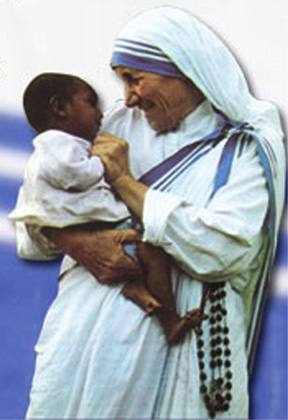 Mother Teresa was the youngest child of Nikola and Drane Bojaxhiu and was originally named 'Agnes Gonxha Bojaxhiu'. Agnes received her first communion at the age of five. From her childhood, she attended prayers and devoted herself in the worship of the Almighty. When Agnes was eight years old, her father died, because of which, the family faced financial crisis. Drane Bojaxhiu, then, assumed the dual role - of being a mother and a father - and helped her children develop a good character.
Mother Teresa was the youngest child of Nikola and Drane Bojaxhiu and was originally named 'Agnes Gonxha Bojaxhiu'. Agnes received her first communion at the age of five. From her childhood, she attended prayers and devoted herself in the worship of the Almighty. When Agnes was eight years old, her father died, because of which, the family faced financial crisis. Drane Bojaxhiu, then, assumed the dual role - of being a mother and a father - and helped her children develop a good character.
 Agnes decided to become a Catholic nun, in order to do missionary work and spread the message of love and compassion in the world. In 1928, she became a Catholic nun and changed her name from Agnes Gonxha Bojaxhiu to Teresa. Later on, she joined the Irish order 'The Sisters of Loretto'. In order to carry out missionary work in India, she was sent to Calcutta on 6th January 1929, where she was appointed as a teacher at St. Mary's High School. Sister Teresa became Mother Teresa on 24th May 1937, when she made final Profession of Vows to become the ‘Spouse of Jesus for Eternity’. She continued to work as a teacher. In 1944, she was made the Principal of the school.
Agnes decided to become a Catholic nun, in order to do missionary work and spread the message of love and compassion in the world. In 1928, she became a Catholic nun and changed her name from Agnes Gonxha Bojaxhiu to Teresa. Later on, she joined the Irish order 'The Sisters of Loretto'. In order to carry out missionary work in India, she was sent to Calcutta on 6th January 1929, where she was appointed as a teacher at St. Mary's High School. Sister Teresa became Mother Teresa on 24th May 1937, when she made final Profession of Vows to become the ‘Spouse of Jesus for Eternity’. She continued to work as a teacher. In 1944, she was made the Principal of the school.

Mother Teresa made use of the donations and thousands of missionaries who had joined her, for the establishment of several centers for poor and needy people across the world. In 1980, she started Homes for people with no one to look after them, people suffering from various incurable diseases, prostitutes, drug addicts and orphans. One of her most significant works was the establishment of center for AIDS patients in 1985, wherein thousands of patients were provided shelter. The Missionaries of Charity was officially recognized as an International Association, on March 29, 1969. By the beginning of 1990s, the number of co-workers had increased manifold and there were about a million of them, working in about 40 countries across the world. 
“I choose the poverty of our poor people. But I am grateful to receive (the Nobel) in the name of the hungry, the naked, the homeless, of the crippled, of the blind, of the lepers, of all those people who feel unwanted, unloved, uncared-for throughout society, people that have become a burden to the society and are shunned by everyone.” — Accepting the Nobel Peace Prize, 1979.






















